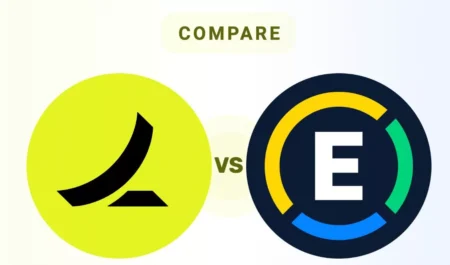1
Learn how to block spam text messages on Smartphone in this guide. Despite the fact that unwanted text messages are typically less annoying than telemarketing calls, they can still be very problematic. Not only do spam texts clog up your text inbox and divert your attention with pointless notifications, but if your cellular plan does not include unlimited texting, you may be paying for junk messages as well.
Also, some spam messages include links to malicious software that could be harmful to your computer. Despite the fact that it may be against the law to send unsolicited commercial text messages or spam to your wireless device, con artists will still attempt to get your attention by sending you unwanted texts. Because engaging with spam texts can leave you open to online attacks such as phishing and malware.
It is essential to be able to recognize spam texts and prevent them from appearing on your device. It is possible that you will be subjected to additional attacks in the future if you confirm or share personal information with spam marketers. Let’s take a look at how to recognize spam texts, how to avoid becoming a victim of them, and how to block spam text messages on Smartphone.
How to block spam text messages on Smartphone
For Android Phones
- Open your messaging app. This is usually the default app that came with your phone, like Messages or Google Messages.
- Open the spam text conversation.
- Tap the three dots or menu icon in the top right corner.
- Look for options like “Block“, “Block number“, “Report spam”, or similar wording.
- Tap the appropriate option to block the sender. Some apps might ask you to confirm your choice.
For iPhone
- Open your Messages app.
- Open the spam text conversation.
- Tap the sender’s name or number at the top.
- Scroll down and tap “Info”.
- Scroll down again and tap “Block this Caller”.
The Impact of Spam Texts on Smartphone Users
- Unwanted Intrusion: Spam texts invade users’ personal space and can be a source of annoyance. Constantly receiving unsolicited messages can disrupt individuals’ privacy and peace of mind.
- Phishing Attacks: Some spam texts may contain phishing attempts, where attackers try to trick users into revealing sensitive information such as passwords, credit card details, or other personal data.
- Malware Distribution: Spam texts might contain links to malicious websites or downloads, leading to the installation of malware on the user’s device. This can compromise the security and functionality of the smartphone.
- Overload on Networks: Mass distribution of spam texts can contribute to network congestion, causing delays in the delivery of legitimate messages and impacting overall communication efficiency.
- Impaired Communication: With the influx of spam, users may become hesitant to open or respond to messages, leading to potential missed or delayed communication with friends, family, or important contacts.
Risks Associated with Spam Texts
- Attacks with phishing: A lot of the time, spam texts have links that go to phishing websites. The goal of these websites is to get people to give out private information like login credentials, credit card numbers, or personal details.
- How to Spread Malware: When someone opens some spam emails, they might find harmful files or links that, if clicked, can install malware on their computer. Malware can make the user’s security and privacy vulnerable, which can lead to data theft or access by people who aren’t supposed to be there.
- Scams with money: A lot of the time, scams in spam texts try to trick people into sending money or giving out personal information. Some common examples are fake lottery winnings, fake investment opportunities, and requests for personal banking information.
- Theft of Identity: Spam texts that try to phish may try to get enough personal information to help someone steal your identity. This information can be used to pretend to be the victim, which can lead to identity theft or getting into accounts without permission.
- Scams with subscriptions: Some spam texts may try to get people to sign up for premium services without their knowledge or permission. This could lead to charges on the victim’s cell phone bill that they didn’t expect.
- Preying on people: People may be tricked into doing things like clicking on links, making payments, or giving out private information in spam texts using social engineering techniques. These strategies use tricks on people’s minds to do bad things.
Conclusion
Whether it’s a never-ending stream of spam messages or that persistent ex who won’t take “no” for an answer, you need to learn how to block text messages. This is something you need to do. There is a good chance that the process is less time-consuming and less painful than you anticipate, regardless of whether you use an iPhone or an Android smartphone.
Questions and Answers
Why can’t I block text messages?
When a message is blocked on an Android phone, it is moved to a folder on the device that is called “Spam and Blocked.” This folder houses all of the messages that have been blocked. This indicates that the phone is still receiving messages from the individuals who have been blocked; the only difference is that they are not notifying you of their messages. This can be a lifesaver in the event that you find yourself in a situation where you actually need those messages that you blocked after the fact for a variety of reasons.
What happens when you block SMS?
When a message is blocked on an Android phone, it is moved to a folder on the device that is referred to as “Spam and Blocked.” This indicates that the phone is still receiving messages from the individuals who have been blocked; the only difference is that they are not notifying you. In the event that you come to require those blocked messages for a variety of reasons after the fact, this can be a lifesaver.
Why am I getting spam text messages?
If you are receiving spam texts, it is highly probable that the person who is sending you a spam text message is attempting to gain access to your personal information, which may include your bank accounts, passwords, social security number, online IDs, and several other types of information. Text messages that are considered spam do not originate from another phone.
You Might Be Interested In










Leave a Reply